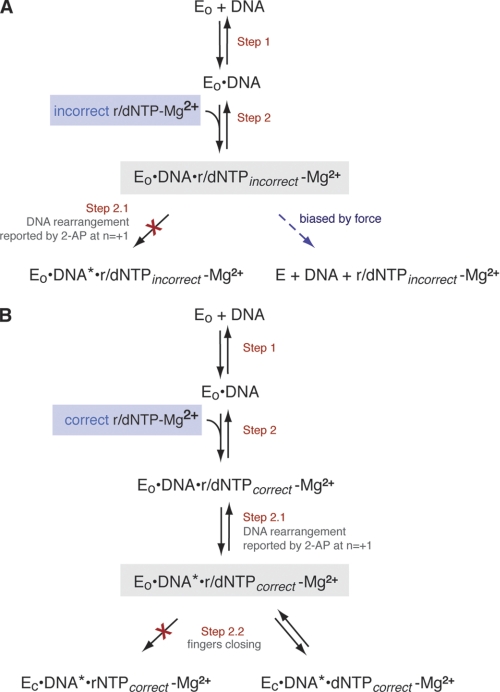FIGURE 6.
Distinct complexes for base and sugar discrimination during nucleotide substrate selection by KF. Shown are steps in the pathway for nucleotide selection by KF discerned in pre-steady-state kinetic and fluorescence studies (2, 4) with the complexes detected in this study for base discrimination (A) or sugar discrimination (B) highlighted against a gray background. A, binding of incorrect (noncomplementary) dNTPs or rNTPs yields a complex that is less stable than the KF-DNA binary complex and that does not undergo the transition reported by a change in the environment of the N = +1 template base (Step 2.1) (2). B, binding of correct (complementary) dNTPs or rNTPs yields complexes that are more stable than KF-DNA binary complexes, but the complexes formed with correct rNTPs are less stable than those formed with correct dNTPs as they do not undergo the fingers-closing transition (Step 2.2). DNA* refers to the DNA rearrangement reported by 2-aminopurine (2-AP) at position N = +1 of the template strand (4).

